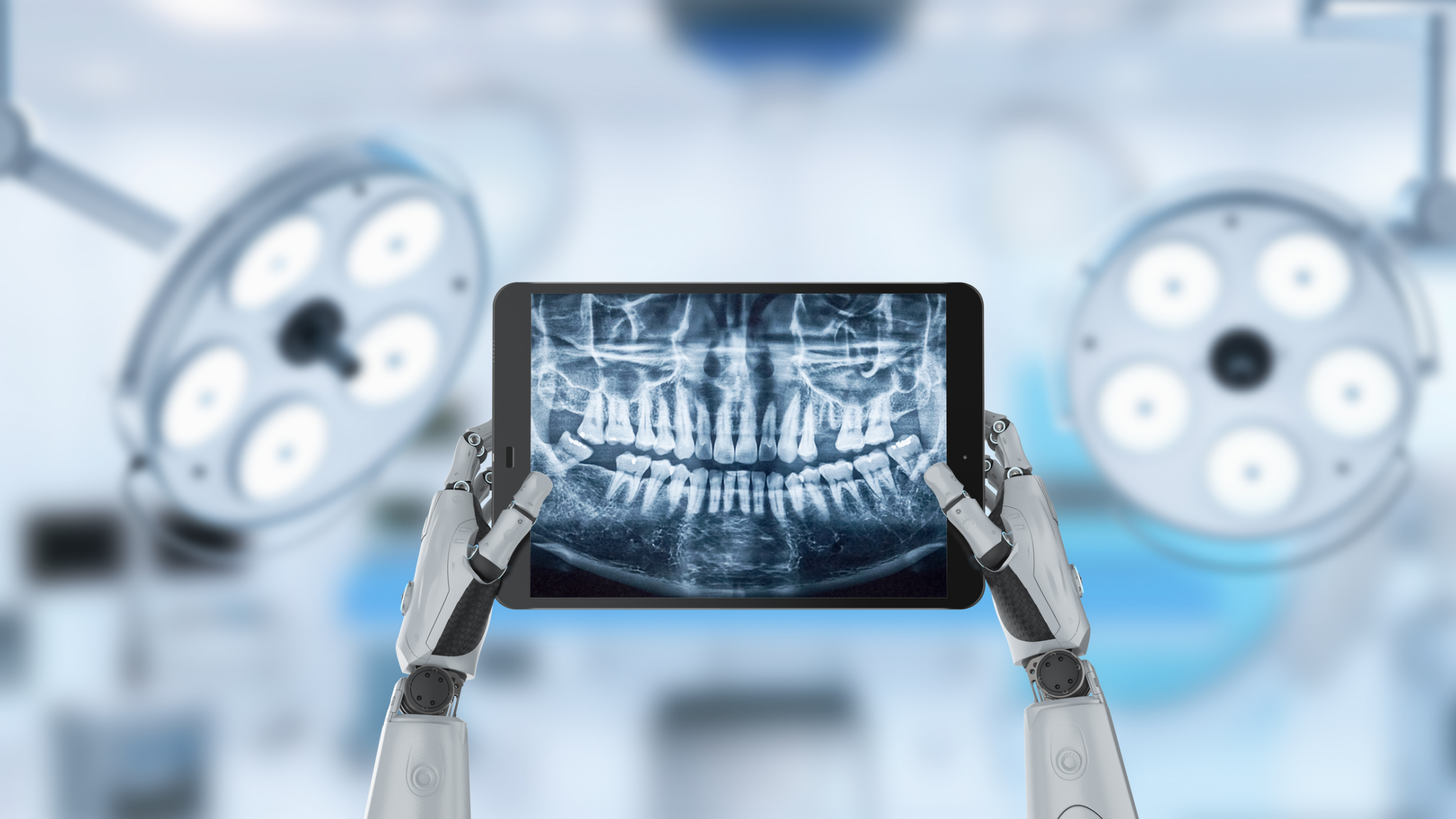Before exploring the top two trends anticipated for Artificial Intelligence (AI) in dentistry, let’s review AI’s significant advancements this year—revolutionizing diagnosis, predictive analysis, and personalized treatment.
Key advancements include AI-powered tools for implant planning and streamlining Cone Beam Computed Tomography (CBCT) scans, says Dr. Thomas Nguyen, DMD, MSc, Diplomate of ABP, FRCD(C). CBCT technology provides high-resolution imaging of bones and teeth, enabling the detection of cysts, infections, and tumors.
“For example, what used to take hours to segment a CBCT scan and plan an implant case now takes just seconds to minutes,” adds Nguyen, who is the associate director of the Division of Periodontics and director of continuing dental education at McGill University’s Faculty of Dental Medicine and Oral Health Sciences.
Advancement in AI segmentation
This leap in efficiency was made possible by advancements in AI segmentation tools. These systems can automatically analyze complex medical and dental images, enabling faster and more precise workflows. Notably, this technology enabled the world’s first robotic arm to perform a crown placement on a human in just 15 minutes this summer.
In October, Alberta-based startup OraQ AI also partnered with Patterson Dental Canada Inc. to bring its innovative AI software to dental clinics across the country. OraQ’s software offers personalized dental care by holistically analyzing patients’ medical and dental histories.
“AI segmentation tools have dramatically transformed diagnostics and case planning this year,” says Nguyen. “This efficiency not only simplifies digital planning but also makes it accessible to more practitioners, raising the standard of care industry-wide.”
Breakthrough beyond segmentation
AI’s impact on guided bone regeneration (GBR) has also been a standout breakthrough in 2024.
“AI-supported workflows for GBR now allow clinicians to accurately predict bone density and tissue growth, paving the way for personalized surgical planning that significantly enhances implant success rates,” Nguyen explains. “Coupled with AI-driven segmentation, these advances bring an unprecedented level of efficiency and accuracy to procedures, particularly for cases with complex anatomical needs.”
A recent project, Dental GENI—a collaboration between Halmstad University and Region Halland—aims to push innovation in AI for GBR and dental implants. Overall, Dental GENI seeks to automate manual processes, cutting down on time and skill demands while improving consistency across clinics.
Looking ahead to 2025, here are two AI trends set to shape dentistry:
1-Connecting personalized data to wearables
AI is expected to integrate hyper-personalized patient care by synthesizing data from wearable technologies. “We may see AI systems capable of collecting real-time feedback from devices tracking grinding and clenching habits, providing clinicians with patient-specific insights,” Nguyen predicts. Such advancements could help dentists create tailored treatment plans with unprecedented accuracy.
2-AI-powered virtual reality in education
Virtual reality (VR), enhanced by AI, is expected to transform dental education and training.
“AI-powered VR platforms will enable students and clinicians to practice advanced procedures in realistic, risk-free environments,” says Nguyen. “This innovation could redefine hands-on training and continuing education, ensuring practitioners are better prepared for real-world scenarios.”
For example, the University of Florida launched a cutting-edge AI-powered simulation program that combines avatars and virtual reality to train future dentists and nurse practitioners.
With AI advancements streamlining diagnostics, treatment planning, and education, dentistry is poised to enter a new era of precision and accessibility in 2025.
Source link

